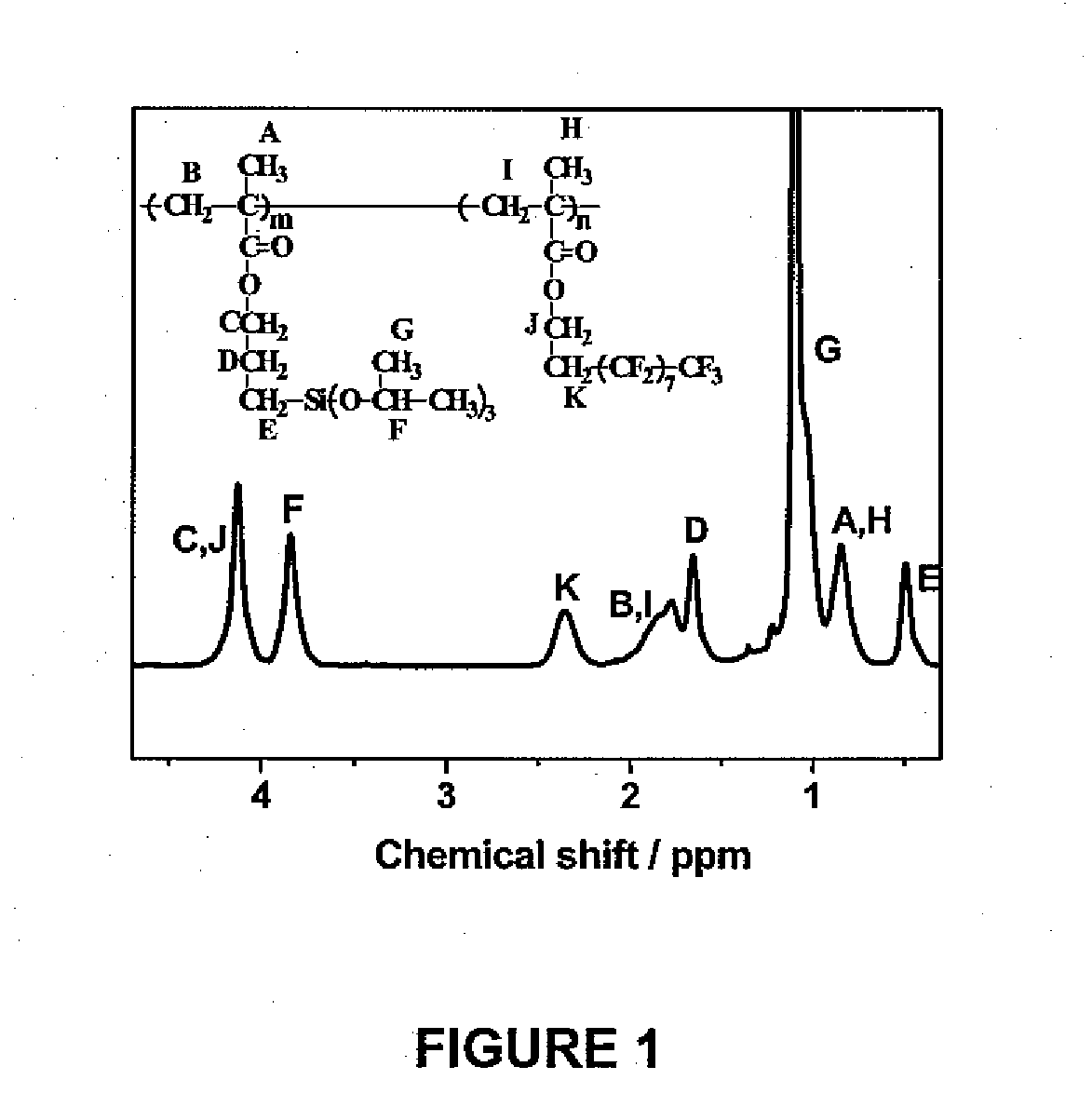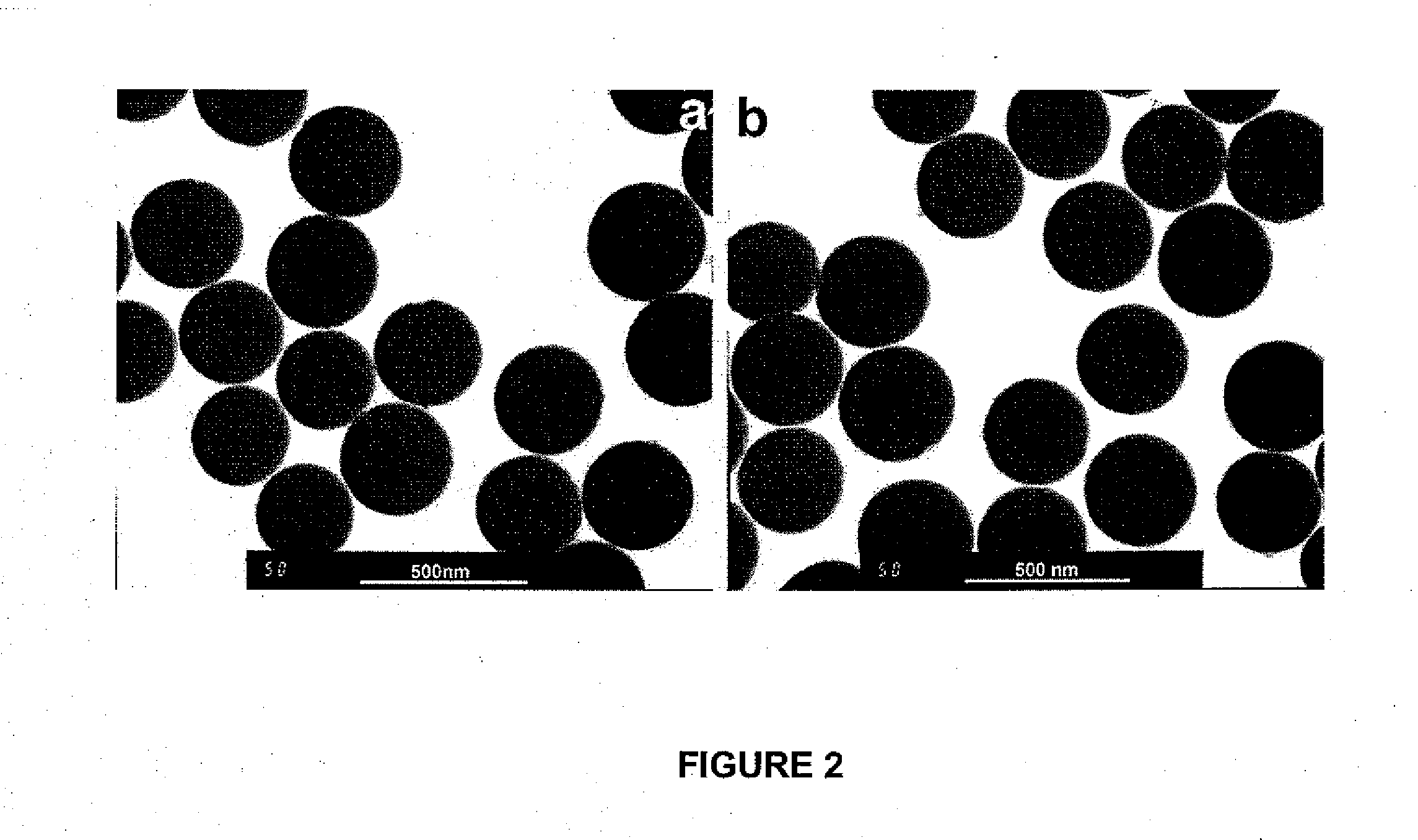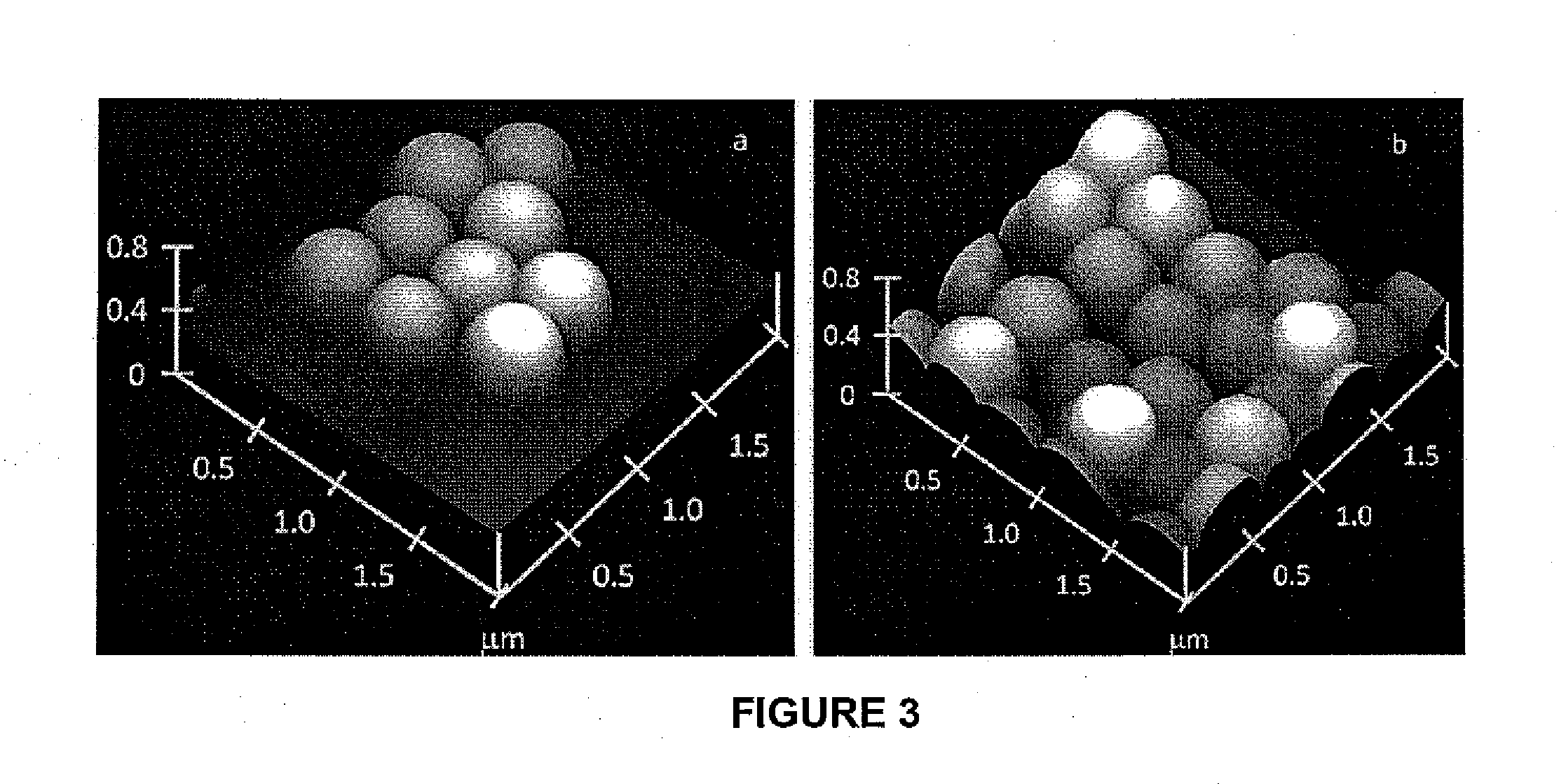Amphiphobic Surfaces from Block Copolymers
a technology of amphiphilicity and copolymer, which is applied in the direction of liquid repellent fibres, coatings, fibre treatment, etc., can solve the problems of high cost low surface energy of fluorinated compounds or polymers, and inability to meet the requirements of a wide range of applications, and achieves enhanced interactions between polymer and substrate, low surface energy, and increased length of anchoring blocks
- Summary
- Abstract
- Description
- Claims
- Application Information
AI Technical Summary
Benefits of technology
Problems solved by technology
Method used
Image
Examples
example 1
Preparation of an Amphiphobic Block Copolymer. Polymer Synthesis and Characterization
[0219]The materials used herein were sourced as described below and as follows: IPSMA was prepared as reported (Ozaki, H. et al., Macromolecules, 1992, 25:1391-1395). FOEMA was purchased from Aldrich; prior to use it was purified by vacuum distillation according to the method reported in the literature (Ishizone, T. et al., Polymer Journal, 1999, 31:983-988).
[0220]An amphiphobic fluorinated crosslinkable block copolymer was prepared as described below using anionic polymerization. A polymer comprising 10 IPSMA units and 10 FOEMA units was used. A relatively short FOEMA block was used to ensure solubility of the resultant amphiphobic diblock copolymer in solvents such as chloroform and deuterated chloroform, which were used for SEC and 1H NMR analyses of the polymer.
[0221]After drying, the yield of product was essentially the same as the amount of reactants used.
[0222]Polymer was eluted as a single s...
example 2
Silica Particle Synthesis and Characterization
[0224]Silica particles were prepared from tetraethoxysilane via sol-gel chemistry using a modified Stober procedure (Sheen, Y. C. et al., J. Polym. Sci., Part B: Polym. Phys., 2008, 46: 1984-1990; Stober, W. et al., J. Colloid Interface Sci., 1968, 26: 62). This process involved ammonia-catalyzed hydrolysis of the ethoxy groups of tetraethoxysilane to yield silanol groups and then condensation of the resultant silanol groups into siloxane bonds. FIGS. 2a and 3a show a TEM image and an AFM topography image, respectively, of silica particles that were prepared. By analyzing over 100 particles, we determined that the particles had an average TEM diameter of 325±10 nm. The small (10 nm) standard deviation of the particle diameter suggested a narrow size distribution for the particles.
[0225]TEM images also revealed that surfaces of the silica particles were not completely smooth, but bore craters and bumps. These craters and bumps were also v...
example 3
Silica Coating by P1 and Determination of Grafted Polymer Amount by TGA
[0227]Silica was coated by P1 in TFT / THF using HCl as catalyst (Sun, T. et al., J. Am. Chem. Soc., 2003, 125: 14996-14997; Brinker, C. J. and Scherer, G., W., Sol-Gel Science: The Physics and Chemistry of Sol-Gel Processing, Academic Press, Inc.: Boston, 1990). Trifluorotoluene (TFT) was used to ensure dispersion of the final particles, which bore a PFOEMA corona. Unless otherwise mentioned, silica particles were always coated using standard conditions, which involved performing a grafting reaction at 21° C. for 8 h in TFT / THF at a THF volume fraction (fTHF) of 9.1%. The molar ratio between IPSMA, HCl, and added water was 1:1:2 (nSi / nHCl / nH2O). The mass ratio used between P1 and SiO2 (mP:mS) was 0.08:1.
[0228]Silica nanoparticles were modified with amphiphobic block copolymer as follows: 3.0 mL of α,α,α-trifluorotoluene and 5.0 mg of silica nanoparticles were placed in a 20 mL vial, and the vial was placed in an u...
PUM
| Property | Measurement | Unit |
|---|---|---|
| Length | aaaaa | aaaaa |
| Fraction | aaaaa | aaaaa |
| Fraction | aaaaa | aaaaa |
Abstract
Description
Claims
Application Information
 Login to View More
Login to View More - R&D
- Intellectual Property
- Life Sciences
- Materials
- Tech Scout
- Unparalleled Data Quality
- Higher Quality Content
- 60% Fewer Hallucinations
Browse by: Latest US Patents, China's latest patents, Technical Efficacy Thesaurus, Application Domain, Technology Topic, Popular Technical Reports.
© 2025 PatSnap. All rights reserved.Legal|Privacy policy|Modern Slavery Act Transparency Statement|Sitemap|About US| Contact US: help@patsnap.com



